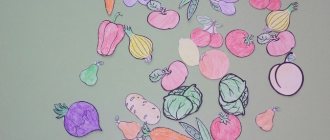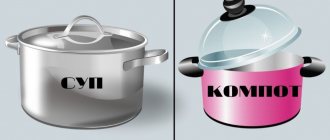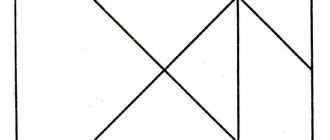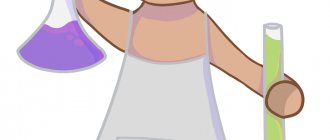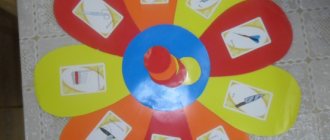"The traffic light is broken"
Game situation. Place of the game situation: joint and independent activities of children and the teacher.
Game name: "The traffic light is broken."
Direction : intellectual development.
Age group: Children of the fifth year of life.
Quantity : 8 children.
Game duration: 10 minutes.
Purpose of the game: development of cognitive abilities through the game.
Tasks:
- Educational: teach children to analyze a given topic and draw conclusions.
- Correctional and developmental: develop general and fine motor skills;
- Developmental: develop observation and curiosity.
- Educational: to cultivate friendly relationships between children, interest in the game.
Methods and techniques:
- Visual (examination, showing)
- Verbal (explanation, demonstration, questions, individual and group answers, encouragement)
- Practical (game)
Equipment: A model of an intersection, a set of toy cars, a didactic game “Assemble a traffic light” (for each child).
The planned result of the game: children develop cognitive abilities, observation skills, and speech becomes more active. Children receive positive emotions and impressions from the game. Will acquire skills to work in a team.
Game structure
Teacher: Hello, guys. I want to play an interesting game with you. Do you want to play with me? Look, I have prepared a layout of the intersection for you. Take the cars and let's go.
- Children, what is a crossroads? (Children's answers).
- That's right, a crossroads is the intersection of two roads.
– Please note that the road has 2 lanes and cars are driving towards each other, each in its own lane. Why do you think? (Children's answers).
- Right. Well done. What is the name of the striped path for people? Do you think it is needed? Why?
- That's right, this is a pedestrian crossing , it is intended for people to safely cross the road.
- Children, who helps the cars move in turns? (Children's answers). The traffic light is correct. of traffic lights : automobile and pedestrian. They differ in the number of light sections. There are three of them for automobiles, and two for pedestrians.
- Oh, guys, our traffic light is broken, what could happen?
(Children's answers: accident, traffic jam).
- What should we do. How will cars now cross the intersection, who will establish order?
(Children's answers: - wait until they do it; repair it yourself; agree on who will go first; call the police).
- That's right, children, well done, when a traffic light breaks down, a traffic controller appears at the intersection, and it is he who regulates the traffic at the intersection until the traffic light is repaired. Using special signals, he shows cars where they need to go. Come on, you and I will repair the traffic light (children are offered the didactic game “Assemble the traffic light”).
- Bogdan, check if the children completed the task correctly? (a discussion is held if someone’s task was completed incorrectly).
- Well, the traffic light has been repaired, you can go.
– Did you children like the game?
– What did you like most?
– I also really liked the way you played and came up with many different ideas.
– Who can you teach to play this game?
– That’s right, other children, we can play “Crossroads” on the street or in a group, or mom and dad.
Didactic game for developing fine motor skills “Traffic Light” (first junior group)
Irina Lisitskaya
Didactic game for developing fine motor skills “Traffic Light” (first junior group)
Didactic game for developing fine motor skills “Traffic Light”
The purpose of this game is to develop sensory perception
Didactic tasks:
Educational:
• developing knowledge about the concept of “traffic light” and its purpose; consolidation of knowledge of colors (red, yellow, green);
Educational:
• Develop visual perception and attention;
• Develop fine motor skills of the hands;
• Development of observation and attention on the roads;
Educational:
• Foster friendly relationships among peers.
• Formation of a positive attitude towards compliance with traffic rules;
Activation of the dictionary: cap, screw, unscrew, red, yellow, green, brown.
Required equipment: plastic bottles with screw caps.
— Show your child how bottle caps are unscrewed and screwed on.
- Ask to repeat your actions.
Children really like tasks like this.
Progress of the lesson:
A story about a traffic light.
Teacher: Guys, do you know what a traffic light is?
(Children answer.)
The teacher takes out a picture of a traffic light and tells the children about it:
“The traffic light is located next to the roads where cars drive, it establishes order on the street so that cars do not crash into each other, and people can cross the roads without fear. He has 3 eyes - 3 orders. They light up one by one. When the red light is on (shows)
- You can’t go.
When the yellow light is on (shows) - you need to get ready, and the green light (shows)
- the transition is allowed.”
Teacher: So, what light can you cross the road at?
Children: Green.
Teacher: Which one is not allowed?
Children: On red.
Teacher: Well done guys, you remembered which light you can cross the road at and which you can’t.
The group includes a Katya doll holding a box with a “damaged” traffic light and lids of three colors (red, yellow, green).
Hero says:
-Children, here is the traffic light! But the traffic light broke down, a strong wind blew, all the signals fell off and got mixed up. I really need to go to visit Bunny, I’m bringing him a gift, but I can’t get through. Look carefully and fix the traffic light by screwing the caps on the signals correctly, and I will check if the kids know how the signals are located correctly on the traffic light. I need to drive along the road, but only the “correct” traffic light allows me to go.
Children look at the colored caps - traffic lights and to Katya’s question “How to make the right traffic light?” the child makes a choice of the necessary caps, confirming his choice by saying the correct location of the traffic lights or comparing them with the layout of the traffic lights, and screws them onto the mini simulator.
In the hands of the teacher there is a hero (Katya, a mini traffic light simulator with signals in the correct order). Depicting movements along the road, the teacher moves the hero from child to child, checking the resulting repaired traffic light. If the child did the right thing, the hero praises him and drives on, if not, then he asks the child to correct the mistake, the hero cannot go further, the “damaged traffic light” does not let him in.
At the end of the game, the hero invites the children to collect gifts for Bunny and ride with him around the group, observing the traffic rules in accordance with the traffic lights.

